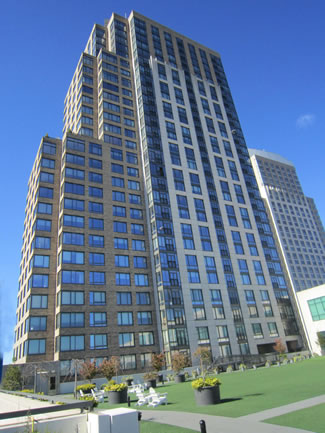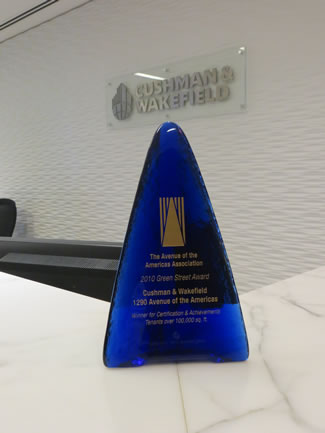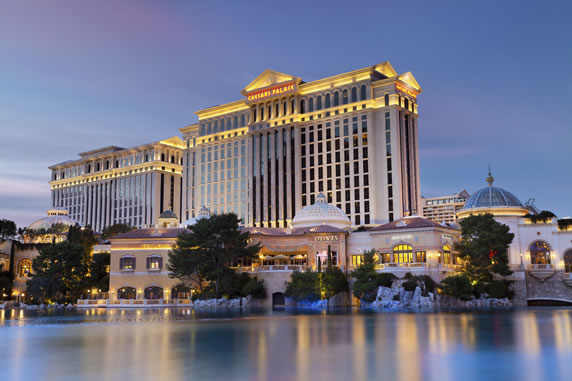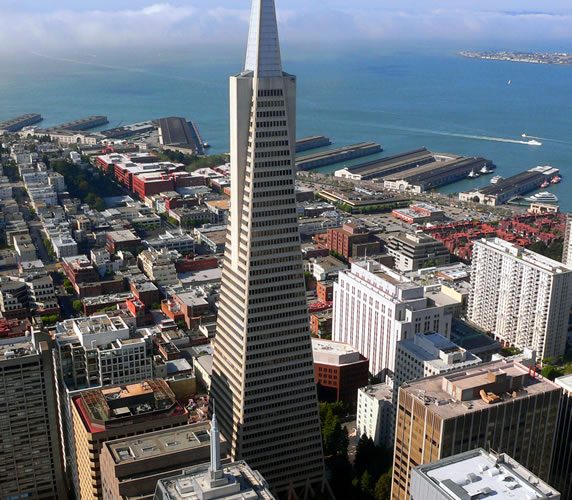Facilities management – especially when it comes to high-rise buildings – is often a game of discovery and problem-solving. But the answers aren’t always clear-cut. Lights being left on, extreme weather, or increased plug load may be to blame for a sudden spike in energy use. HVAC problems could be caused by solar heat gain, tenants overriding central controls, or lack of maintenance. High water bills could be due to leaky toilets, high water pressure, or irrigation systems that run too often.
These real-life problems were met head-on by property and facility management teams. Not only did they find solutions, but these challenges also presented the opportunity to improve systems and operations, increasing efficiency and productivity. And although these buildings faced different setbacks, the problem-solving process for all three are remarkable similar: start by pinpointing the cause, and then identify the most cost-effective solution that will also provide the best return on investment.
Kicking High Utility Costs
The Challenge: High energy costs were becoming a problem for tenants in the 212 condos located in the Trump Tower at City Center in White Plains, NY; energy use was twice as high as predicted by developers when the 35-story building was originally built in 2006.
The Fix: An energy audit was conducted first by a third-party provider so Trump Management could understand where energy was being wasted. The results of the audit showed that there were three major issues causing such high energy bills:
- Inefficient lighting systems (and too many fixtures)
- Lack of temperature control
- Gas-fired domestic hot water heaters

Energy costs for tenants at Trump Tower at City Center were twice as high as originally predicted by developers when the building was built in 2006. An energy audit pointed to three major energy hogs for Trump Tower at City Center: lighting, hot water heaters, and temperature controls.
Once those three problems were identified, Larry Gomez, Trump Management property manager, knew where to start. “The first thing I did was look at NYSERDA’s website to see what was out there,” he explains. He discovered that NYSERDA’s Multifamily Performance Program could provide incentives and a loan if Trump Tower at City Center reduced total energy use by 20 percent. Gomez’s goal was to invest in solutions that would cut energy use by at least 20 percent without costing the building more than the savings earned. As a result, six solutions were identified:
- Cogeneration (combined heat and power) to supplement hot water heating
- Energy-efficient lighting upgrades in common areas and parking garages, as well as exterior lighting
- Controls, including motion sensors and timers in hallways and stairwells
- Improved boiler and temperature controls (timers for dryer exhaust fans)
- Installation of pool covers to reduce the cost of heating
- Integration of an energy management system
“The energy audit really gave me a better feel for the building – what was right with the building and what could be improved on, and what we could improve in the future even after we did [these projects],” explains Gomez. With these improvements in place, Gomez says total savings equaled a 21-percent reduction (and provided a complete return on investment in under four years). The lighting upgrades alone dropped lighting energy usage in half, says Gomez. “The electricity bill in the parking garage dropped from $3,000 to $1,400 a month.”
In total, project costs were a little over $928,000. NYSERDA incentives covered $287,000; the rest was covered by a low-interest loan. The incentives were paid out in installments by NYSERDA at major project milestones: after the energy audit, halfway through work on the identified projects, and upon completion of the work. A bonus payment rewards participants if they achieve more than a 20-percent savings one year out. In this case, NYSERDA paid out an extra $150 to $300 per unit to Trump Management.
“The incentive checks were important – and good – but the real impact is every month, when you get energy bills in the mail that are 20 percent cheaper. It’s been more than three years now, and we’re still saving $300,000 in energy bills each year,” emphasizes Gomez.
So Many Buildings, So Little Time
The Challenge: Cushman & Wakefield has several managed properties (totaling more than 1 billion square feet of space) that each offer unique needs. The goal for each building is similar: to be as environmentally friendly as possible.
As the first real estate firm to sign a Memorandum of Understanding (MOU) with the U.S. Environmental Protection Agency in 2008, Cushman & Wakefield committed to reducing carbon emissions from energy, water, and waste by 10 percent by 2012 over a 2008 baseline. The hope was to achieve this target in both corporate Cushman & Wakefield properties, as well as managed properties across the country.
The Fix: To meet the goals set forth in the MOU, Cushman & Wakefield launched its Environmental Challenge for managed properties. To make sure these reduction goals were met, Cushman & Wakefield evaluated each property to understand the most important reduction initiatives for each. Because each building has different tenants, different uses, and different systems, the strategies used to save water and energy would also be unique.

Cushman & Wakefield has won several awards for its dedication to ensuring energy efficiency for all of its high-rise buildings.
Benchmarking started the process, explains Eric Duchon, director of sustainability strategies for Cushman & Wakefield, New York. “We utilize ENERGY STAR Portfolio Manager to manage energy and water use, as well as platforms from service providers. Portfolio Manager is a great starting place in regard to energy; it gives a standard score of 1 through 100 for most properties, which is a great indicator as to whether there is room for improvement.”
Cushman & Wakefield also uses the LEED-EB rating system as a framework for implementing sustainable operations. “Obtaining the actual certifications is great proof to the market that the buildings are running efficiently,” says Duchon, “especially for leasing purposes. LEED and ENERGY STAR are important to us, but managing our properties as efficiently and sustainably as possible is more important.”
Onsite management teams and energy auditors worked together to identify opportunities for efficiency improvements. Cushman & Wakefield also engages tenants to ensure that they’re aware of these efforts to reduce water, waste, and energy. “We also provide them with the resources they need for their own efforts,” Duchon explains.
For example, an audit at the 48-story Transamerica Pyramid in San Francisco revealed that retrofits of indoor water fixtures and fittings would offer up to a 20-percent reduction in water consumption, surpassing the goal of reducing water usage by 10 percent by 2012. Major lighting upgrades and HVAC system retrofits provided significant energy savings, including installation of an onsite cogeneration plant that supplies 70 percent of electricity (and all of the building’s heating). The cogeneration system alone saves about $700,000 in energy costs each year for the high-rise. As with every building managed by Cushman & Wakefield, these green building projects were based on the results of detailed investigation, and then implemented specifically for the Transamerica Pyramid.
Analyses were prepared for each Cushman & Wakefield client, including a list of all available state-/utility-funded rebates and incentives that reduce payback. “We also identify the environmental benefits of these initiatives to the building and its occupants.” No- and low-cost improvements (lighting retrofits, faucet aerators, working with waste haulers, etc.) have provided great success for many buildings in Cushman & Wakefield’s portfolio.
In its own corporate facilities, Cushman & Wakefield has employed strategies such as:
- Considering environmental criteria in office site selection for new leased space
- Initiating pilot programs in selected offices to promote energy efficiency, water conservation, waste minimization, and recycling, as well as purchasing of recycled products
- Pursuing green building certification when undertaking fitouts or refurbishments of new leased space, where feasible
The firm also issued the Cushman & Wakefield Green Office Tool Kit to employees, which provides resources for helping managers develop green teams to support best practices in sustainability throughout its corporate facilities.
Nationwide Water Savings
The Challenge: Caesars Entertainment wants to reduce water use by 10 percent by 2015 (and reduce usage by 15 percent by 2020) to not only decrease Caesars water consumption in its 39 properties across the country (including 42,000+ hotel rooms and nearly 58 million square feet of space, as well as 100,000+ faucets), but also save on water bills as part of its CodeGreen program.
The Fix: The first step for Caesars Entertainment in making water efficiency a priority was a thorough audit and evaluation to understand current water usage levels at all of its properties, including air-conditioning impact. After establishing a 2008 water use baseline for its hotels, Caesars Entertainment put a plan in place to assess and track reduction efforts through a third-party service’s online database.
The assessments and baseline usage establishment identified several opportunities for water savings:
- Starting a towel and linen reuse program for guestrooms
- Replacing standard washers with tunnel washers
- Installing WaterSense showerheads and faucet aerators
- Using reclaimed water for irrigation when possible
- Installing submeters to track water usage in cooling towers to help identify leaks and equipment failure
- Removing sod and replacing it with drought-tolerant landscaping
- Individual water-efficiency projects based on location (not all changes needed to be Caesars-wide)
- Efficient water treatment strategies that enable reduced water use in mechanical cooling systems
Depending on water-usage levels at each facility, projects were implemented that would have the most impact.

In February 2014, Caesars Entertainment became the first hotel chain to sign the U.S. Environmental Protection Agency’s WaterSense H2Otel Challenge. The company wants to reduce water use by 10 percent by 2015 (and reduce usage by 15 percent by 2020).
To make sure its water-efficiency investments are having an impact, Caesars allows employees at all levels to access information about facility water usage. To further increase communication, Caesars consolidates data from utility bills and passes along that information to the staff members in charge of everyday water use (kitchen, laundry, maintenance, etc.). “Employee engagement is core to our effort,” says Eric Dominguez, corporate director of utilities, engineering, and environmental affairs for Caesars Entertainment. “They’re the ones who are able to make a difference in the day-to-day operations of our hotels.”
Guest surveys were also conducted to gauge how customers really felt about the company’s green programs (and ensure they weren’t being negatively affected by the changes). The feedback showed that guests felt better about Caesars Entertainment when they had more information about the sustainability initiatives. “We have a lot of communication in our rooms; we offer our guests information about what we’re doing and encourage them to get involved,” says Dominguez. “In certain locations, we actually have video screens up that talk about some of the interesting things we’re doing from a sustainability perspective.”
In February, Caesars Entertainment became the first hotel chain to sign the U.S. Environmental Protection Agency’s WaterSense H2Otel Challenge, committing to assess water use and savings opportunities, change out products and processes to achieve best practices, and track progress and achievement.
Small actions, when scaled, can have big impacts, says Dominguez. For example, Caesars recently installed more than 10,000 low-flow showerheads across several of its properties in southern Nevada, such as 35-story Harrah’s, 14-story Caesars Palace, and 33-story Paris Las Vegas. This resulted in an estimated savings of 50 million gallons of water per year, he explains, and avoided energy use to heat the water estimated at over 18,000 MMBtu per year.



 An award winning editor, Leah spent over eight years in senior editorial positions at both BUILDINGS magazine and ARCHI-TECH magazine. Her work has been incorporated into training and educational programs around the country. She is a graduate of University of Iowa. She is Editor at Large for High Rise Facilities.
An award winning editor, Leah spent over eight years in senior editorial positions at both BUILDINGS magazine and ARCHI-TECH magazine. Her work has been incorporated into training and educational programs around the country. She is a graduate of University of Iowa. She is Editor at Large for High Rise Facilities.